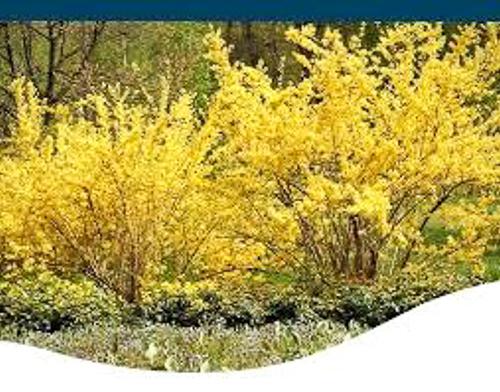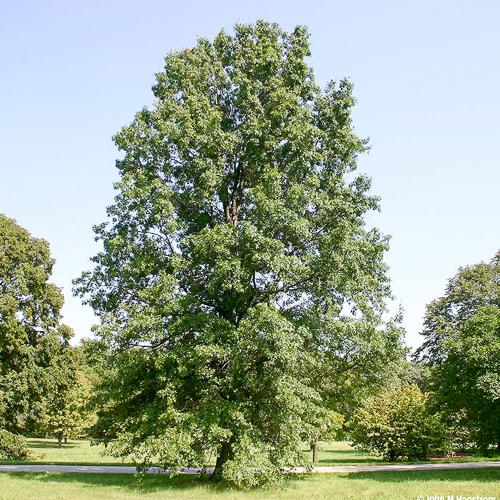GARDENS & GROUNDS (Wanderings With William)
From June 2009 Tips & Tales -- Shared by William Young
Do not despair, carefully cut the browned twigs or limbs back several inches and look for green in the resulting cross section of the woody portion. If not visible, cut back another two inches until you come to a green cross section. If the winter kill has affected the whole plant, the leaves will eventually drop off and latent buds will bring forth new leaves, unless the roots have been severely dehydrated.
These same plants will not have made sufficient root growth to provide the leaves and stems with nutrients and water under normal conditions of rainfall. Frequent applications of water with one of the soluble fertilizers being added every two weeks are suggested. This should be balanced, containing nitrogen, phosphorus and potassium fertilizer.
We are blessed with several patches of forsythia (Forsythia suspensa) on the campus. There are eight or more species, sometimes referred to as Golden Bells. Native to Southeast Asia, China and Japan, forsythia is hardy and virtually insect and fungi free. However, as you enjoy them now remember that when they have finished blooming they should be cut back to encourage new growth on which next year’s buds will form and bloom. Never cut them back in the fall if you want bloom in the spring. If you wish to restrict growth and still have bloom, then cut them severely now and cut back fifty percent in the fall.

The above was printed in the first issue of Tips & Tales nearly 12 years ago, but it seems like it could have been referring to recent months. And the tips on dealing with winter-damaged plants are still relevant. Although I’m not sure where the pin oaks referred to were located or if they were cut down, there is still a row of stately oaks across from the entrance to the Corson Center.